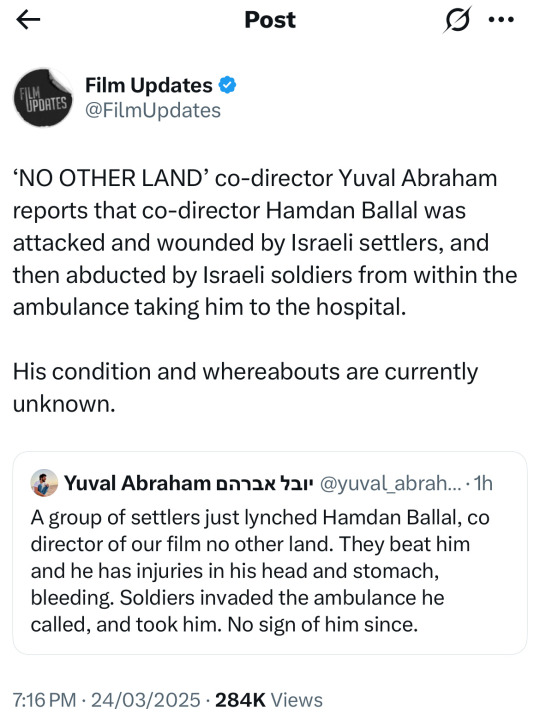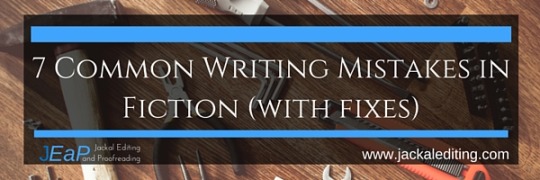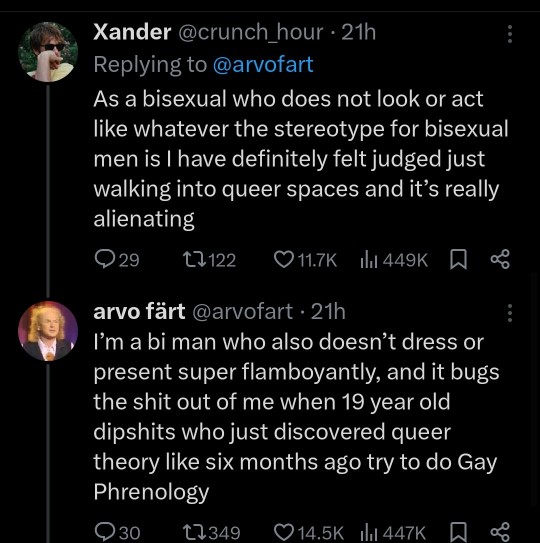He/HimLetterboxd: https://letterboxd.com/mr_dreamtime/YouTube: https://www.youtube.com/@brainfood8971
Last active 3 hours ago
Don't wanna be here? Send us removal request.
Text



so what you’re telling me is donald trump has never had a son who knows how to turn on a laptop before
1K notes
·
View notes
Text
They’re scared because they know that the public is with Luigi.

They’re violating his rights because they need to maintain capitalism.
Keep talking about Luigi.
8K notes
·
View notes
Text
sorry if this is too kinky but can you hold my hand and tell me i mean a lot to you
6K notes
·
View notes
Text
one of my sexual fantasies is to have someone notice my absence and wonder about me
9K notes
·
View notes
Photo

This is the money Marge. Reblog for good fortune
82K notes
·
View notes
Text

captured from an ambulance. captured. from an ambulance. do not stop speaking about palestine please
20K notes
·
View notes
Text

(Quds) Despite Israeli occupation checkpoints and restrictions, thousands of Palestinians managed today to reach Al-Aqsa Mosque to perform Taraweeh prayers in occupied Jerusalem.
191 notes
·
View notes
Text
24 March 2025.
A baby girl (less than a year old) was killed in a US-Israeli airstrike that targeted Al Razi school that was sheltering displaced Palestinians in the Nusairat refugee camp, central Gaza.
God help the children of Gaza.
(source)
31 notes
·
View notes
Text
That article really was disgusting in its absolute disregard for human life like when he said that about how he saw where the chat said they were going to strike and instead of idk warning any people who lived there or doing anything to prevent it he used it to "confirm that the chat was real" or some bullshit by going to social media and seeing people's scared tweets as they were being bombed. Useless and voyeuristic scum. Do you understand that when the us drops bombs, people die? Real people?
5K notes
·
View notes
Text
Writing Resources List

I use my blog to share writing resources that I’ve collected over the years. I’ve recently gotten some new followers, so I thought I would make a list of many of these resources for easy reference.
(However, this is not a complete list of all the resources I’ve posted. For more writing resources, feel free to check out my blog.)
Encouragement for Writers
Writer’s Block & Procrastination
Writing Your Story’s Plot
How to Write a Scene
Choosing a Setting for Your Story
Character Arc & Character Development
Character Traits
How to Write Heroes & Villains
Elemental Magic & Superpowers
Writing Magic Systems
Fantasy Writing & World-Building
Writing Fight Scenes
Swords and Bows
Writing Mermaids
Writing Relationships & Romance
Romance & Relationship Prompts
+
I’m a writer, poet, and editor. I share writing resources that I’ve collected over the years and found helpful for my own writing. If you like my blog, follow me for more resources! ♡
3K notes
·
View notes
Text
How to Write a Character
↠ Start with the basics, because obviously. Name. Age. Gender. Maybe even a birthday if you’re feeling fancy. This is step one because, well, your character needs to exist before they can be interesting. But nobody cares if they’re 27 or 37 unless it actually matters to the story.
↠ Looks aren’t everything… but also, describe them. Yes, we know their soul is more important than their hair color, but readers still need something to visualize. Do they have the kind of face that makes babies cry? Do they always look like they just rolled out of bed? Give us details, not just “tall with brown hair.
↠ Personality isn’t just “kind but tough.” For the love of storytelling, give them more than two adjectives. Are they kind, or do they just pretend to be because they hate confrontation? Are they actually tough, or are they just too emotionally repressed to cry in public? Dig deeper.
↠ Backstory = Trauma (usually). Something shaped them. Maybe it was a messy divorce, maybe they were the middle child and never got enough attention, or maybe they once got humiliated in a spelling bee and never recovered. Whatever it is, make it matter to who they are today.
↠ Give them a goal. Preferably a messy one. If your character’s only motivation is to “be happy” or “do their best,” they’re boring. They need a real goal, one that conflicts with who they are, what they believe in, or what they think they deserve. Bonus points if it wrecks them emotionally.
↠ Make them suffer. Yes, I said it. A smooth, easy journey is not a story. Give them obstacles. Rip things away from them. Make them work for what they want. Nobody wants to read about a character who just gets everything handed to them (unless it’s satire, then carry on).
↠ Relationships = Depth. Nobody exists in a vacuum. Who do they love? Who annoys the hell out of them? Who do they have that messy, can’t-live-with-you-can’t-live-without-you tension with? People shape us. So, shape your character through the people in their life.
↠ Give them a voice that actually sounds like them. If all your characters talk the same, you’ve got a problem. Some people ramble, some overthink, some are blunt to the point of being offensive. Let their voice show who they are. You should be able to tell who’s talking without dialogue tags.
↠ If they don’t grow, what’s the point? People change. They learn things, make mistakes, get their hearts broken, and (hopefully) become a little wiser. If your character starts and ends the story as the same exact person, you just wasted everyone’s time.
↠ Flaws. Give. Them. Flaws. Nobody likes a perfect character. Give them something to struggle with, maybe they’re selfish, maybe they push people away, maybe they’re addicted to the thrill of self-destruction (fun!). Make them real. Make them human.
↠ Relatability is key. Your character doesn’t have to be likable, but they do have to be understandable. Readers need to get them, even if they don’t agree with them. If your character never struggles, never doubts, and never screws up, I have bad news: they’re not a character, they’re a mannequin.
↠ You’re never actually done. Characters evolve, not just in the story, but as you write them. If something feels off, fix it. If they feel flat, dig deeper. Keep refining, rewriting, and letting them surprise you. That’s how you create someone who feels real.
Now go forth and write characters that actually make people feel something. And if you need a reminder, just ask yourself: Would I care if this person existed in real life? If the answer is meh, start over.
3K notes
·
View notes
Note
Hi! Can you give tips for writing explosions? For example a building exploding or a vehicle or a bomb. Like the reader should physically feel the gravity of the explosion and it's impact.
Hi anon!! I loved this question!
Here are some tips on writing a convincing explosion scene:

Perspective:
Focus on the perspective of the character that is experiencing this and weave the rest of the scene around them.
If they know the bomb is about to go off: Note how they hold their breath when they realize nothing can be done, how the world stops for a second before it goes off, try to capture whatever fear, dread, or other emotions they may be feeling. Really draw out these moments and the tension in them.
If they don't know the bomb is about to go off: Remember that they don't have the time to think or realize that something is exploding. Really play with the confusion and surprise of the moment. What does this look like for them if they don't have time to brace themselves? If they didn't even have time to try and stop it? What is your character thinking and feeling here?
The Explosion:
We know what an explosion looks like, so the level of attention you want to place on the blast is really up to you as an author, and how it fits with the rest of your story. If you have an omniscient narrator, it may be best to keep things on the light side, but if your point of view is limited to one narrator/character during the blast, really focus on their experience and thoughts.
Explosion (or other words like burst, rupture, eruption) of sound, light and heat. Will be deafening and damage hearing if your character is near. If it's dark, describe how the blinding light transformed the world around your character.
Your character would feel the vibration of the explosion before the sound hits. Describe them being thrown back by the force and the shock wave.
Maybe there's debris flying through the air; shards of glass, wood, metal.
Ultimately, pay more attention to the before and after than the explosion itself. An explosion has urgency and immediacy which can be diminished if you spend too much time dwelling on it. Set the scene by showing how it ravaged the environment around it, show the characters reeling, their ears ringing, and their eyes burning.
Other elements:
Sensory details are your friend.
If it fits, pay attention to the situation around the explosion and capture the atmosphere in those moments. Is your character supposed to stop the explosion? Really play with the time crunch and the panic that comes with that.
If it's a building: describe what that looks like. Are there people inside? Have your audience picture the building when it was intact so we know what's at stake. Then have us picture it caving in, or crumbling. Describe the debris falling onto the streets below.
If it's a car: describe its appearance and any potential signs that its about to happen like damage, smoking hood, or leaking fluids. Maybe your character can smell gas. Sounds like popping noises and grinding metal. The twisted metal of the car during/after the explosion.
Hope this helps!
62 notes
·
View notes
Text
Body Language
When someone is...
Sad

Face/Body:
Avoidant/reduced eye contact
Drooping eyelids
Downcast eyes
Frowning
Raised inner ends of eyebrows
Dropped or furrowed eyebrows
Quivering lip/biting lip
Wrinkled nose
Voice:
Soft pitch
Low lone
Pauses/hesitant speech
Quiet/breathy
Slow speech
Voice cracks/breaking voice
Gestures/Posture:
Slouching/lowered head
Rigid/tense posture
Half formed/slow movement
Fidgeting or clasped hands
Sniffing or heavy swallows
Self soothing gestures (running hands over the arms, hand over heart, holding face in palms, etc)
14K notes
·
View notes
Photo

I read a lot of writing in my line of work and while that’s amazing, I see the same flaws again and again. Below is a list of 7 common writing mistakes in fiction and how you can fix them. This list is by no means complete. In fact there’s a great list over at The Editor’s Blog that covers even more mistakes.
1. Bad dialogue
Sometimes writers can forget that they’re writing a conversation and thus not write a conversation. The dialogue can be boring, stilted and unnatural, and I’d rather listen to the territorial call of an Australian Raven than read one more word of it.
There are many things that contribute to bad dialogue, but here are the three that really get on my nerves:
Not using contractions–I’ve seen work that is modern and still doesn’t use contractions. Consider this: “You are going to be late.” Unless the speaker is trying to sound like an irritated mother and is leaving an emphatic silence between each word to sound threatening, use contractions. It sounds really drawn out and like the speaker is pointing their nose in the air. We generally don’t speak like this in real life, so neither should your characters.
Using complete sentences–Not only is it natural for your characters to chop their sentences, this can also contribute to their voice. Does your character say “I don’t know.” or “Dunno.” Would he/she say “I missed the train and had to find a lift home.” or “Missed the train. Had to find a ride.” In casual speech, we often only use the words necessary to convey our message, even if it doesn’t form a complete sentence. You shouldn’t apply this to every line of dialogue, but consider it if your dialogue sounds stale.
Using characters as a conduit for research and plot information–Sometimes writers like to show off their research (looking at you Jurassic Park), backstory, world building and plot by having their characters talk way too much. If your character says “Once this valley was home to an ancient race of elves, who looked after the land and treated it with respect. One day, the secret magic spring dried up and then the goblins came. Without their magic spring, the elves couldn’t fight back, and they were killed by the goblins. The goblins didn’t respect the land and now it’s uninhabitable.” he should probably shut up. It sounds less like a person talking than it does an audio tour. The information he’s shared could be given in a much more interesting way.
How you can fix it:
Listen to and watch the way real people talk to each other. Do they speak in full sentences with full words? Do they speak with grammatical correctness? Do they speak differently in different situations? How do hand gestures, body language and facial expressions help them communicate?
Read your dialogue out loud as if you’re practising lines for a movie. Does it sound natural? Does it flow?
Test every piece of information your characters give out. Does it all need to be said? Would your character say all of it at once? Do they need to say it all in so many words?
2. Passages of uninterrupted speech or thought
Sometimes you might want to avoid telling the reader about something and have a character tell another character instead. Sometimes you might want to avoid telling the reader how a character feels about something by having them think about it excessively instead. If this goes on for longer than a couple of paragraphs (or less), you risk allowing your reader to drift out of the scene.
The only thing anchoring your reader in the scene is your characters and what they’re doing. If the characters are talking or thinking for a long time without interacting with anyone or anything else, they might as well be floating in space, which can make the reader feel like they’re floating in space. That’s not to say that they’ve forgotten where the scene is taking place or who else is involved, just that it can feel that way if this is how the character acts.
How you can fix it:
If your characters have a lot to say, try to include the other characters as well. Have them ask questions or make comments so it feels like a scene and not a soliloquy.
If your character is around others when he/she is deep in thought, try to include the other characters in some way. If the POV character is thinking about something that the other characters can see, why not give voice to one of the other characters in between thought paragraphs?
If the character is alone when he/she is deep in thought, is there a way they can interact with their environment? Unless they’re standing in front of a wall, they should be able to see, smell, feel or hear something.
If your character is absolutely, completely lost in thought, is there a way you can bring some sort of image into it? For example, on page 216 of The Hunger Games by Suzanne Collins, Katniss is thinking about how to treat a burn she receives. Almost the entire page is a paragraph describing a memory; however, there is still action in this memory and, therefore, there is something for the reader to imagine.
3. Not knowing when to/not to use said
Some people will tell you to use descriptive speech tags and others will tell you there’s nothing wrong with said. Both are true, but when do you follow the former and when do you follow the latter? And when do you use no speech tags at all?
Using anything but said and using nothing but said both get exhausting and boring very fast.
How you can fix it:
Below is a rough guide to what kind of speech tag to use. Please bear in mind that it is only a guide and will not and should not apply to every situation.

Said is unobtrusive–a way of letting the reader know who’s talking without making a song and dance about it. Specific verbs (e.g. whispered, shouted, mumbled) give the reader information about how the words are being said. Adverbial tags can also give extra information about how something is being said, but more often than not they can be replaced with a stronger verb (e.g. she said loudly can be replaced with she shouted). Writers can also fall into the trap of telling where it’s better to show when using adverbial tags, which can make the writing bland. Sometimes telling is better, but with speech tags, it’s usually better to absorb the reader in the conversation. If you’ve used an adverbial tag, go back and have a look at it. Is there a better way you could get the message across?
What you need to pay attention to when determining what speech tags to use is the context of the speech. If the reader is already aware of the manner in which a character is talking, it won’t be necessary to remind them every time the character speaks. If there are only two characters in the conversation, it won’t be necessary to finish each quote with he said/she said. Going back to #2, you can also do away with speech tags entirely and use action to demonstrate how a character is feeling, while also grounding the reader in the scene.
The key to avoiding repetition and blandness is to find a balance between using the unobtrusive said, using something more specific, and mixing it up with a bit of action, which means you might not even need a tag at all.
4. Too much description/overwriting
Sometimes it’s better to tell and not show. Some details just aren’t important enough to warrant a lengthy description. If you want your reader to know that it’s raining, you can write something better than “It was raining”, but there’s no need to go overboard and write a poem about how the puddles on the asphalt looked like a great abyss.
Think of description like camera focus. The more you describe something, the more focus you put on it. If you put enough focus on something, you eliminate everything else. What’s this? A close-up. What does a close-up in a movie tell you? That object of the close-up is significant.
Be wary: when you write thirty words describing the way the moonlight is reflecting off the inky black lake, you might not be just setting the scene. You might also be giving the lake undue emphasis, and it’s probably going to irritate your reader when they realise there’s nothing significant about the lake at all, you were just showing off your imagery skills.
How you can fix it:
Keep it real. What would the character notice, what would they think about it and is it worth the attention? And try not to focus on sight. Your characters have more than one way to perceive their environment, and incorporating their other senses can help build a 3D setting for your reader rather than just painting them a picture. Give the reader enough to imagine the scene, and no more.
5. Not knowing when to/not to use adverbs
There’s a lot of writing advice out there that will tell you to cut all adverbs. The result is that many writers now think adverbs exist only to eat their children and wouldn’t dare to ever use one.
There is truth to the advice, but to say “The road to hell is paved with adverbs”? Really, Stephen King? And his dandelion analogy assumes there’s no editing process.
Adverbs aren’t evil, but there is such a thing as using them ineffectively. Which of the below are more descriptive?
She ran quickly or She sprinted
“It’s a long way down,” he said nervously or “It’s a long way down,” he said
He was shamefully prone to anxiety or He was prone to anxiety
She sprinted not only gets to the point faster, it also creates a more powerful image for the reader. “It’s a long way down,” he said gives no indication of how the speaker is speaking or feeling; however, “It’s a long way down,” he said nervously is telling, not showing. Rather than using an adverb here, the writer could describe the speaker’s body language. He was shamefully prone to anxiety tells you how the character feels about being prone to anxiety and there is no stronger word to replace “shamefully prone”.
How you can fix it:
Ask yourself:
How would the meaning of the sentence change if the adverb was removed?
Can the adverb and verb be replaced by a single verb?
Does the action really need clarification?
Does the adverb add something to the sentence that can’t be described in another way?
6. No conflict in the beginning
The first few chapters of a lot of stories I’ve read involve the main character plodding along in their daily life. This is a good thing as the reader needs to get a feel for your character before the big plot things happen, but that doesn’t mean the first few chapters should be without conflict. I don’t want to read about a character waking up, looking at themselves in the mirror, getting dressed, getting coffee, going to work, getting home, going on a date etc. for three chapters. It’s boring and I don’t care about any of it.
The confusion might be caused by common story structure theories that say the main conflict enters the story at the first plot point, or 25% into the story. But this doesn’t mean there should be zero conflict at the beginning! At the beginning of Harry Potter and the Philosopher’s Stone Harry was told ‘no funny business’ or he’d be grounded. Not long after that, there was some vanishing glass and an escaped boa constrictor. After this happened there was a mysterious letter addressed to Harry, and he spent an entire chapter trying to get hold of it as the weirdness escalated. There’s conflict and a goal right off the bat, and the story hasn’t even really started yet. In The Hunger Games Katniss faces the Reaping. In The Hobbit Bilbo finds himself hosting a dinner party for dwarfs and being asked to go and fight a dragon.
How you can fix it:
Take a look at all the books you’ve read. Most of them (if not all) start with some sort of problem or goal. Study up on this to help you realise what makes a good beginning.
Don’t fill your first few chapters with characterisation and nothing else. Build your character in the context of a problem or goal.
Keep in mind that you find your characters more interesting than your reader does. What you like about your character might not be enough to keep the reader’s interest.
What’s going on in your character’s life? How is this going to influence what happens when the conflict or story goal takes the stage?
What would happen if you cut your beginning out of the story? Would the plot still make sense? Maybe it’s better to start the story at a later point.
7. Lack of story structure
When you write a first draft, whether you’ve planned it or not, there are going to be structural flaws. Maybe halfway through you thought of a way to solidify a character’s motivation. Maybe at the climax you thought of a way to strengthen your conflict. Maybe somewhere in the middle you had no idea where you were going with this and slugged your way through some boring scenes. It’s all good; this is how stories come together.
What should happen next is that you revise your draft with story structure in mind. There’ll be a lot of “I should add a scene here about this” and “what was I thinking when I wrote that?” and after a few goes, you’ll have a story.
Writers don’t always do this though (which, by the way, makes my job take longer and cost more). They’ll go through and fix all of the obvious problems, but what remains is a manuscript that still lacks a solid structure. It’s messy to read, it’s confusing, it’s clearly not thought out, and it feels like the writer is giving me the finger. I’ll regret paying for the book, stop reading it and leave a negative review on Goodreads. Is that worth not giving your book a good edit?
How you can fix it:
Read a lot. Make sure you have a decent grasp on different story structures. Make sure you understand the way stories progress, the way they’re paced and what keeps the reader engaged.
Re-outline. Or if you pantsed your way through the first draft, make an outline. Write a checklist for what each scene should accomplish and what each chapter should accomplish. Make a timeline of how the events progress and how the tension increases. Don’t base this on what you’ve written, base it on what you’ve figured out about your plot.
Edit ruthlessly. If a scene doesn’t measure up to your new plan, cut it. If it’s in the wrong place, move it.
38K notes
·
View notes





